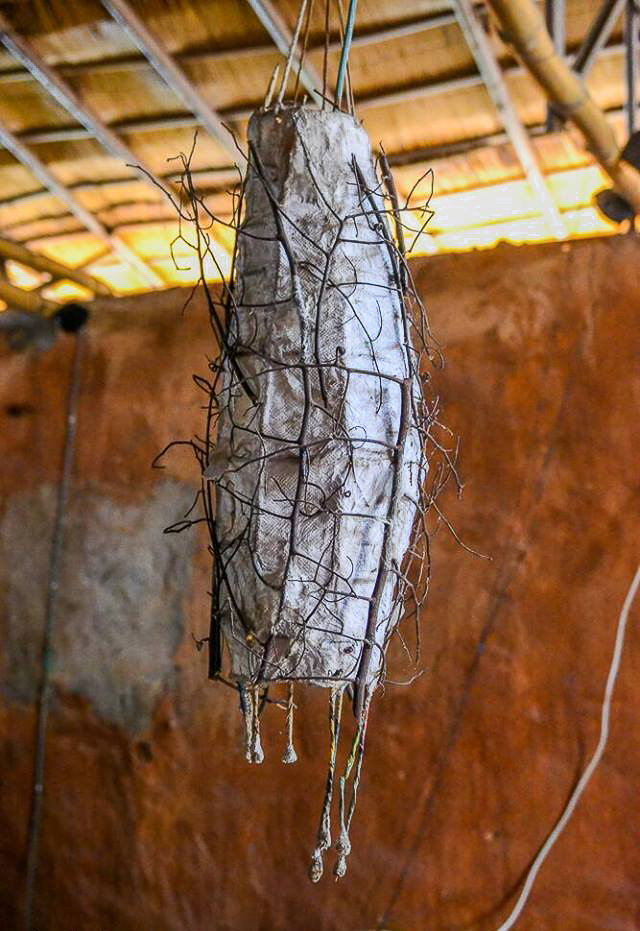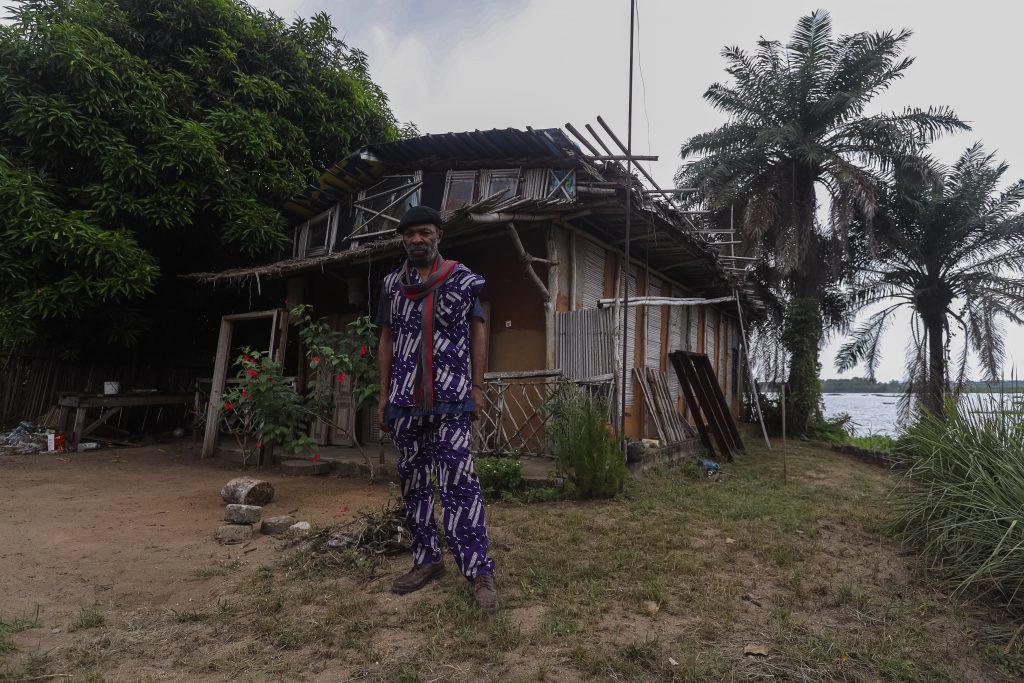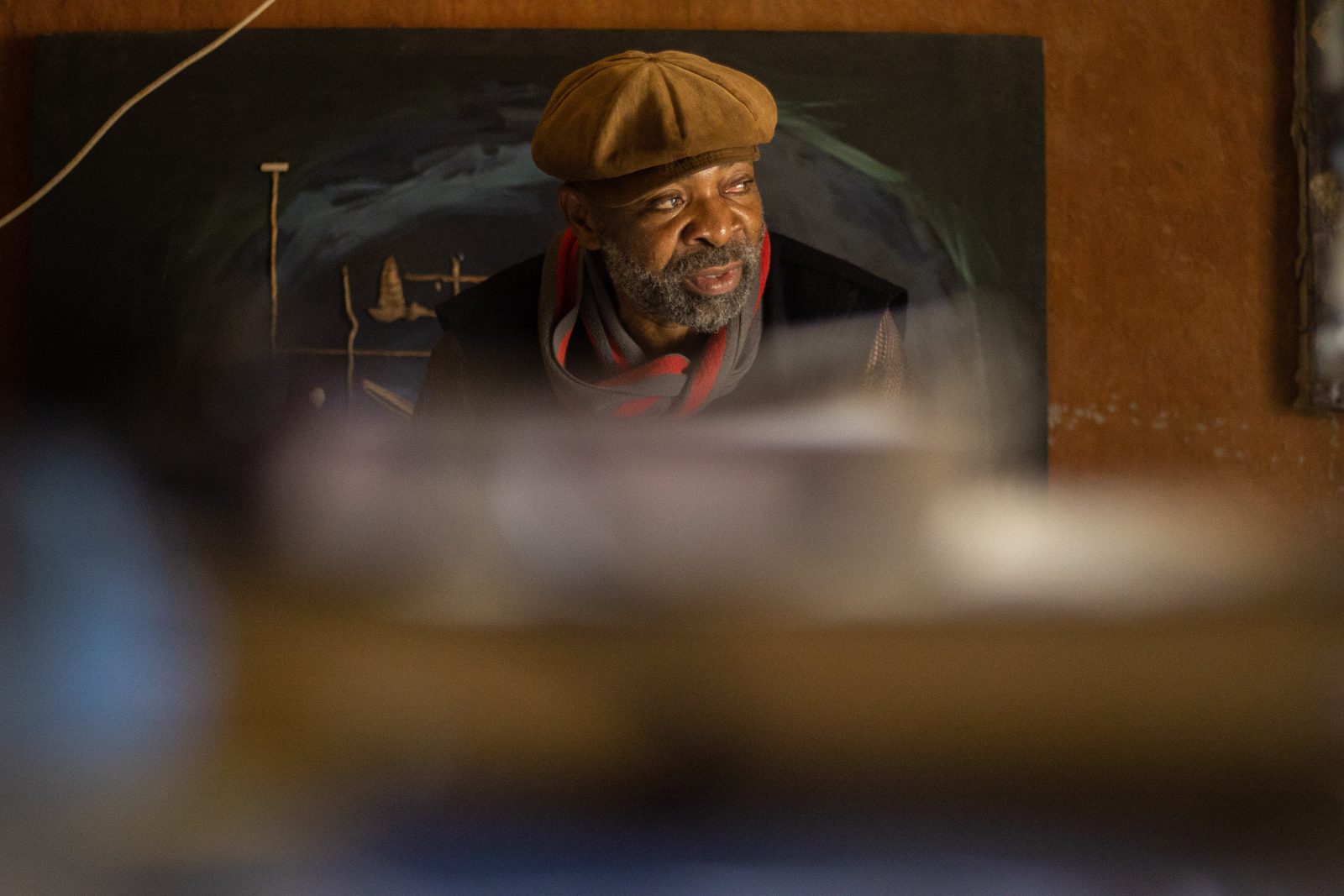
Charles Okereke’s mother wanted him exorcised — of the spirit that made him overly curious.
As a child, Okereke would wander off and pick objects off the ground, experiment, and destroy items in the process. He soon got labelled ogbanje, and this led to the attempts at dispossessing him of the spirit at different churches.
Today, as an artist, his studio and home is a self-constructed space that is in every sense bohemian and signals the failure of efforts to exorcise him.

The artist who is an ardent environmentalist says the space is “a giant installation” and calls it “the Academy”, short for the Alexander Academy of Arts, Design and Alternative Methods. An experimental platform that is research-oriented, with a focus on the environment.
The thesis for his project is summarised in the question he asks: “If we were allowed as Africans to evolve naturally without the intervention of the colonialists who came in, how would Africa have looked like in the 21st century?”
In the coastal town of Badagry, by a riverside, in a building of mud walls and thatched roof, electric lamps inspired by the natural design of wasp nests and spider webs dangle overhead. Populating the space is handcrafted furniture as well as pieces of figurative and abstract art that inquire into the essence of humanity.

One of such artworks is the painting of a horned face which he says is inspired by a masquerade. Its eyes are eerily searching and compelling to look at. Another is a constellation of interesting shapes, made of recycled objects, that tell a story. His new portfolio invites the observer to the world of nsibidi, a system of symbols indigenous to southeastern Nigeria.
The goddess of the seas and oceans, generally considered a mermaid — half paragon of human beauty and half fish — in cultures and religions of the world, seeps into many conversations with him and takes a prominent place in his expressions of spirituality.
Professionally, Okereke started out in what he calls “commercial art”, apprenticing for four years in Aba, learning screen printing, lithography, and neon sign designs.

This was followed by a degree in fine arts at the University of Port Harcourt, as a sculpting major and in 2003, he moved to Lagos where a rich career in the fine arts was launched.
His works have travelled, exhibited at the Skoto Gallery, New York; Smithsonian National Museum of African Art, Washington DC; Manchester Gallery, Manchester; and at the African Photography Biennial in Bamako.
He recalls how, when he first arrived at Badagry, with a head full of dreadlocks and a penchant for picking items off the ground for art and experiments, his neighbours were quick to label him a lunatic.

But this has not stopped the multidisciplinary artist’s pursuits as he creates art and investigates the physical environment.
The academy is not a finished project, nor is it just limited to the physical space, he says. Workshops are in place, community-based projects are being planned, and his experiments which mimic natural objects to construct human spaces and tools continue, as Okereke seeks the answer to his question of what 21st-century African architecture would have looked like in an alternate universe.
Photography: Omoregie Osakpolor.



